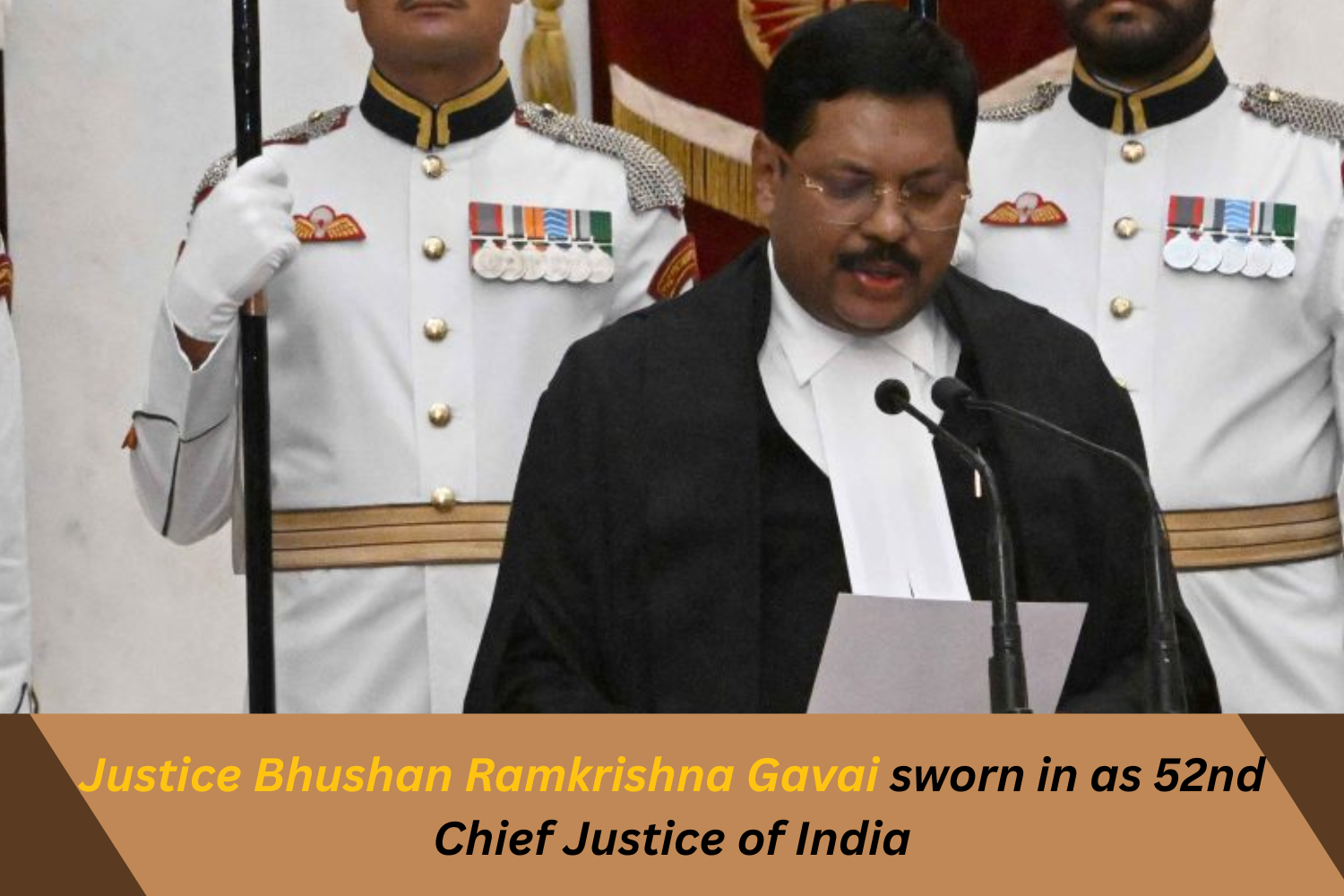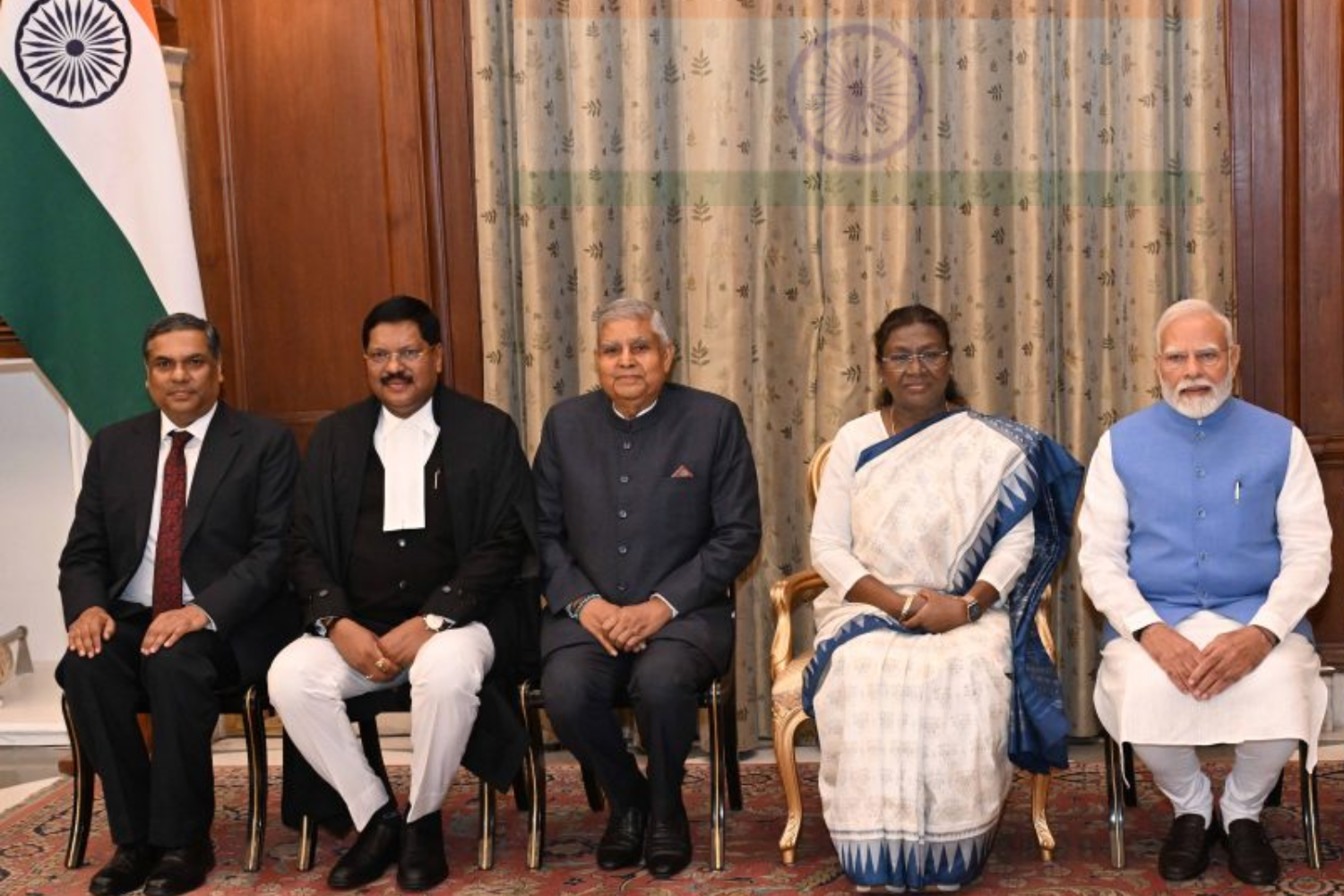Justice B.R. Gavai Sworn in as 52nd Chief Justice of India
Ankita
. 4 min read
On May 14, 2025, Justice Bhushan Ramkrishna Gavai was sworn in as the 52nd Chief Justice of India in a historic event for the Indian court. Justice Gavai is the first Buddhist Chief Justice of India. President Droupadi Murmu administered the oath of office at a ceremony held at Rashtrapati Bhavan in New Delhi. Justice Gavai succeeds Justice Sanjiv Khanna and will hold office until his retirement on November 23, 2025.

Background and Historic Appointment
Justice Gavai, born on November 24, 1960, in Amravati, Maharashtra, hails from a humble background. His father, Ramakrishna Suryabhan Gavai, was a prominent political leader who served as the Governor of Bihar and Kerala. Justice Gavai began his legal career in 1985 and steadily rose due to his dedication and legal acumen. He was appointed a judge of the Bombay High Court in 2003 and elevated to the Supreme Court of India in May 2019.
Justice Gavai’s elevation marks a significant milestone in the country’s judicial history. He is the first Buddhist and only the second Dalit to occupy the highest judicial office in India, after Justice K.G. Balakrishnan. His appointment has been widely celebrated as a step toward greater inclusivity and representation in the Indian judiciary.
Judicial Contributions and Key Judgments
During his tenure as a Supreme Court judge, Justice Gavai has served on several Constitutional Benches and authored over 300 judgments. His most notable contributions are rulings that upheld the validity of the 2016 demonetization policy and struck down the controversial electoral bonds scheme, declaring it unconstitutional. These decisions underscore his commitment to upholding constitutional principles and ensuring transparency in public affairs.
Swearing-in Ceremony

The swearing-in ceremony was a deeply personal occasion for Justice Gavai. President Droupadi Murmu administered the oath of office, marking a historic moment as Justice Gavai became the first Buddhist and only the second Dalit to hold the position of Chief Justice of India, following Justice K.G. Balakrishnan. Several notable personalities attended the swearing-in event, including Prime Minister Narendra Modi, Vice President Jagdeep Dhankhar, Home Minister Amit Shah, Defence Minister Rajnath Singh, Law Minister Arjun Ram Meghwal, and former President Ram Nath Kovind.
Present as well, Justice Gavai's mother, Kamaltai Gavai, expressed delight in her son's accomplishment and credited his success to his commitment to helping the most fortunate. In a touching gesture, he sought his mother's blessings before the ceremony, a moment that resonated widely and symbolized his rootedness and respect for his upbringing. His journey from a modest background to the apex of India’s judiciary has inspired many, highlighting the values of perseverance and integrity.
Responsibilities Ahead
As Chief Justice, Justice Gavai faces significant responsibilities. One of his first tasks includes addressing 14 legal and constitutional questions referred to the Supreme Court by the President of India. These questions touch upon key aspects of federalism, electoral reforms, and judicial accountability issues that will shape the future of Indian democracy.
Justice Gavai's time in office is likely to be active and significant, even if his stay is only somewhat less than six months. Drawing on his great knowledge of constitutional law and broad experience, legal experts expect he would approach the bench with a realistic and fair attitude.
Conclusion
The appointment of Justice B.R. Gavai as India's Chief Justice marks a turning point for the country, more than just a normal succession. The message his journey communicates that the highest offices in the nation are available to people who are devoted to justice, regardless of background, will probably define his legacy more than his opinions.The legal profession and the country will monitor attentively as he starts his term, hoping that Justice Gavai will keep the lofty values of the Constitution intact and keep guiding the court toward more justice, equity, and inclusiveness.
More Stories from
How did India respond to Donald Trump's 25% tariff penalty on India?
Trade tensions between the United States and India have sharply increased as a result of this recent development. Know how India responds to Donald Trump's 25% tariff penalty on India.
Geoffrey Hinton's AI Warning: The Most Dangerous Invention Ever
AI is both beneficial and dangerous, depending on how it is developed, deployed, and regulated.
Unbelievable Facts about World History that will surprise you
Human history and the natural world are filled with mysteries, marvels, and strange truths that challenge our understanding. In this article, we will explore some unbelievable facts about world history.
Why skill-based hiring is gaining importance over degrees?
Skill-based hiring vs Degree, which matters first? what you can do” matters more than “what degree you hold.”
The Hidden Secret of the Great Pyramid’s exposed
With the development of scientific instruments and technology, each day, discoveries about the world are surprising us





